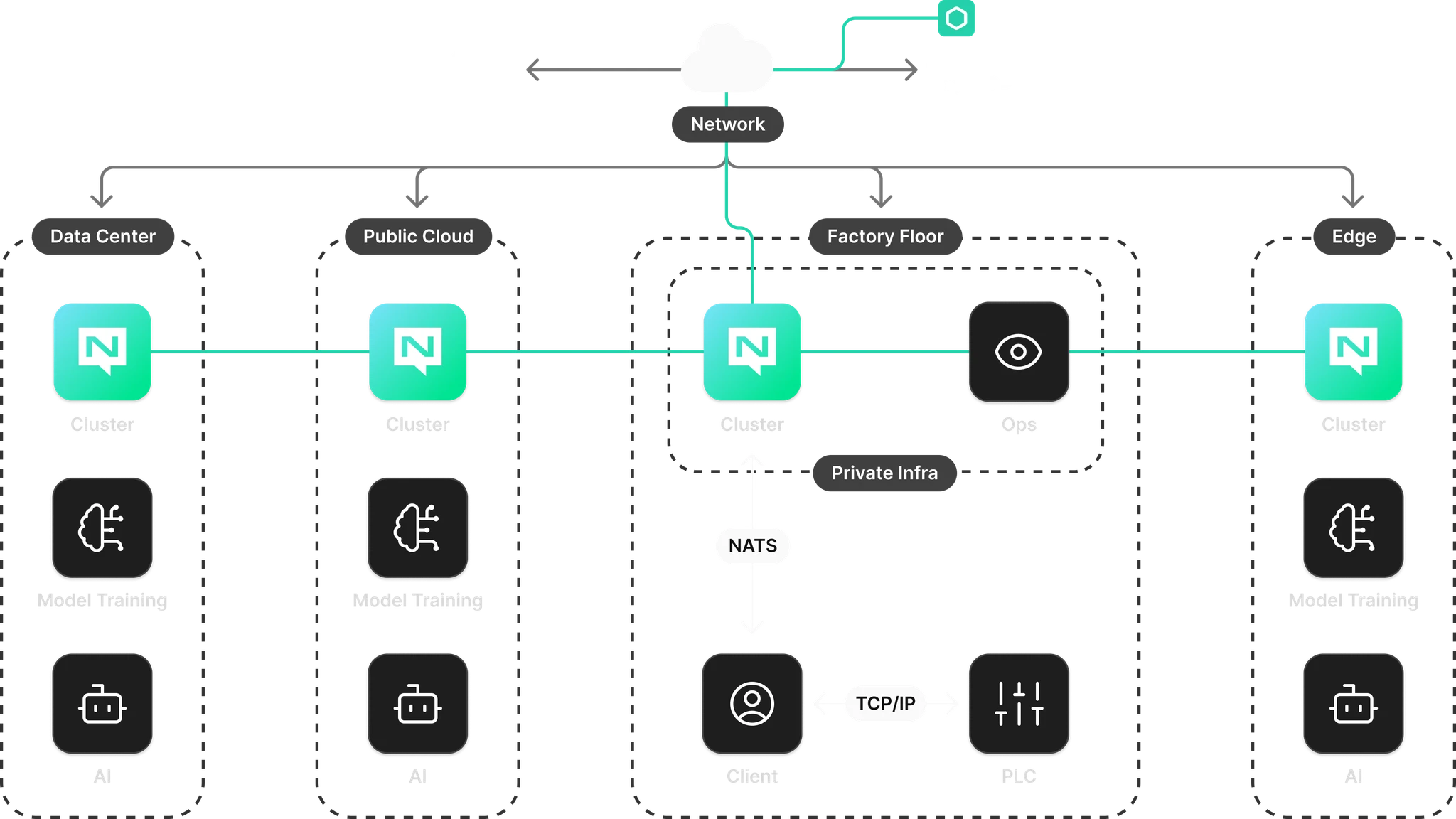AI-Ready Messaging from Edge to Cloud
From architects to developers, Synadia Platform, powered by NATS, provides a real-time, lightweight and secure connectivity fabric for modern microservices and AI-ready apps critical to globally distributed businesses – across multi-cloud, edge, and on-premises deployments.

How Synadia Helps
Leading AI development teams use Synadia Platform as their data connectivity backbone for real-time communication at scale when training and invoking machine learning models across distributed systems. The result? Seamless data exchange and low-latency responses for high-performance AI applications across multi-cloud and multi-edge.
Talk to our architectsData flexibility
Enable efficient handling of data at different values and volumes. Process high-volume low-value data directly at the edge and reliably transmit critical low-volume, high-value events to and from the cloud.
Bi-directional functionality
Facilitate reliable bi-directional data flows for updating AI models, distributing binaries, or time-sensitive data changes to and from edge locations, for synchronized data exchanges and enhanced response times.
Event-based communication
Re-deploy and re-architect apps without breaking the solution or re-configuring existing structures with subject-based addressing. Layer 7 conversational-style transport supports dynamic, event-based communication between AI services over TCP/IP.
Simple, seamless connectivity
Unifies diverse messaging models, lowering latency and system complexity while boosting performance. Offers asynchronous catch-up to sync messages when remote leaf nodes at the edge with intermittent connectivity reconnect.
Integrated data management
Manage data easily with a unified data layer for streaming, key-value stores and object storage. Ephemeral, durable data handling enables flexible, scalable inferencing and updates without IP multicast across AI components.
NATS Execution Engine, built-in
Accelerate development and deployment of AI applications by focusing on core application logic without reinventing the communication layer, eliminating extensive development and debugging of infrastructure code.

See how Synadia simplifies running AI at the edge
Powering Al at the edge with NATS.io

Watch our talk from KubeCon 2023

Why NATS.io JetStream is so well suited to AI at the edge

NATS.fm: AI at the Edge(s) with NATS.io

